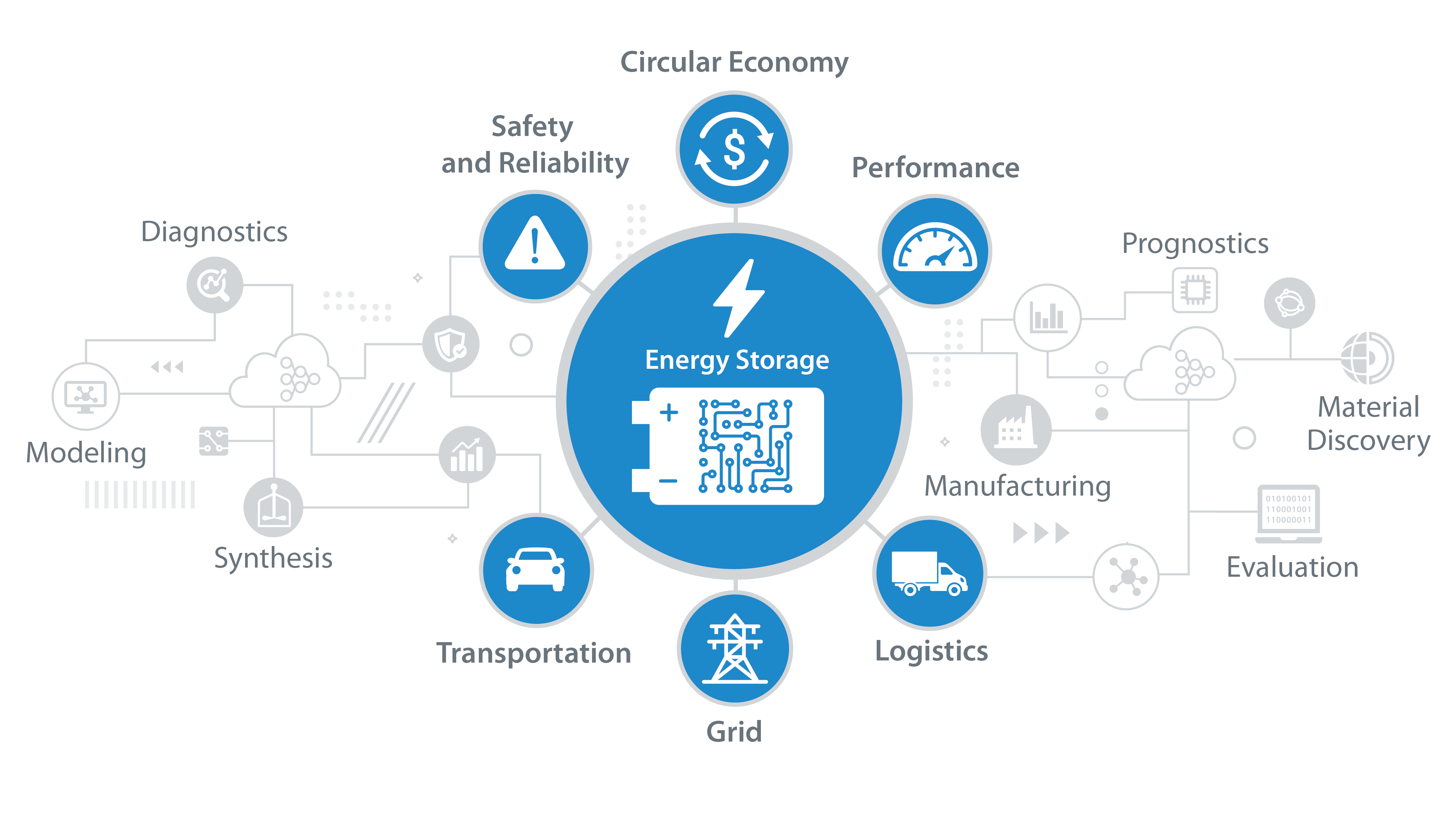NREL Advances in Battery Research with Physics-Based Machine Learning Accelerates Characterization of Cell Performance, Lifetime, and Safety

Energy storage scientists at the National Renewable Energy Laboratory (NREL) are turning to cutting-edge machine-learning techniques to strengthen understanding of advanced battery materials, chemistries, and cell designs. These complex computer algorithms help accelerate the characterization of battery performance, lifetime, and safety by offering insights into potential patterns within datasets. Researchers can use machine learning and artificial intelligence to evaluate manufacturing quality, lifetime and performance, materials research, and safety protocols for energy storage applications.
"NREL researchers lead the field in interfacing data with advanced models," said Matt Keyser, senior energy storage engineer. "We plan to leverage machine learning alongside our extensive experience and established database of research to further develop state-of-the-art battery technologies."
Recent groundbreaking efforts to map the architecture of lithium-ion electrode particles highlight the opportunities offered by artificial intelligence in energy storage research. Scientists struggle to identify the pathways lithium ions take when intercalating into cathode particles, affecting lithium transport, rate limitations, and degradation mechanisms. NREL researchers used electron backscatter diffraction, machine learning, and multi-physics modeling to simulate the ions' movement. Machine-learning segmentation identified and labeled distinct grains in the three-dimensional model. The integrated approach allowed researchers to view a realistic electrode architecture in an innovative virtual environment. Using this new technique, researchers can guide the design of next-generation cell chemistries to identify favorable particle architectures.
Increasing Battery Life Prediction Accuracy
NREL researchers also recently turned to machine learning to identify the most effective models to predict battery lifetime and performance. An NREL-developed algorithm analyzed numerous existing models to identify crucial equation components and generate a parsimonious model. The new model examined battery aging data to pinpoint lithium-ion batteries' capacity fade rates more accurately and with more confidence than conventional methods. Using machine learning to improve existing prediction models offers clear impacts to inform experiment design in the future. In addition to lifetime prediction, new models can inform cost analysis, degradation diagnosis, and the development of charging protocols.
“The machine-learning method automatically discovered factors that, as scientists, we know lead to accelerated battery degradation,” said Kandler Smith, who leads NREL’s battery computational modeling team. “This physical underpinning gives us confidence in their predictive capability. Accuracy is double that of our previous human-expert models.”
Future Opportunities in Battery Safety
The science of battery safety continues to be at the forefront of NREL's research initiatives, and machine learning offers new insights into battery failure prediction. Efforts to fully understand lithium-ion battery failure continue to present challenges, as identical cells do not always react the same way to abuse scenarios. Physics-based machine learning adds a fresh perspective to existing prediction models, integrating electrical, thermal, acoustic, and mechanical data to identify when and how failure will occur. Simulation data supported by these experiments will help researchers pinpoint safe operating conditions and cell designs for increased safety, as well as informing engineers of the specific hazards associated with failure to facilitate design of safer battery systems.
"The ability to accurately predict hazardous failure scenarios of batteries will lead to substantial improvements in the safety of battery systems," said NREL energy storage researcher Donal Finegan. "Interfacing physics-based modeling and machine learning with experimental data may accelerate the design of safer and more reliable cells and battery systems.”
Collaboration Across Industry
The key to accurate and effective machine learning is access to openly available, high-quality experimental data. NREL plays a pivotal role in collecting and disseminating data for complex battery physics, ranging from micro-scale electrode design to grid-scale storage prognostics. The newly released Battery Failure Databank is the most extensive compilation of safety data openly available, containing data from several hundred abuse tests conducted on lithium-ion batteries. NREL also hosts the Battery Microstructure Library, from where X-ray nano-CT data of lithium-ion electrodes is housed.
An upcoming NREL-hosted Machine Learning for Batteries workshop will bring together national laboratories, academia, and industry to discuss machine learning implications on battery research. The workshop will focus on microstructure design and continuum modeling, performance predictions, and battery safety. The workshop will take place March 23–25, 2021, and aims to share knowledge and foster collaboration on the latest applications of machine learning. Register for the workshop.
Learn more about NREL's transportation and mobility and energy storage research.
Last Updated May 28, 2025
